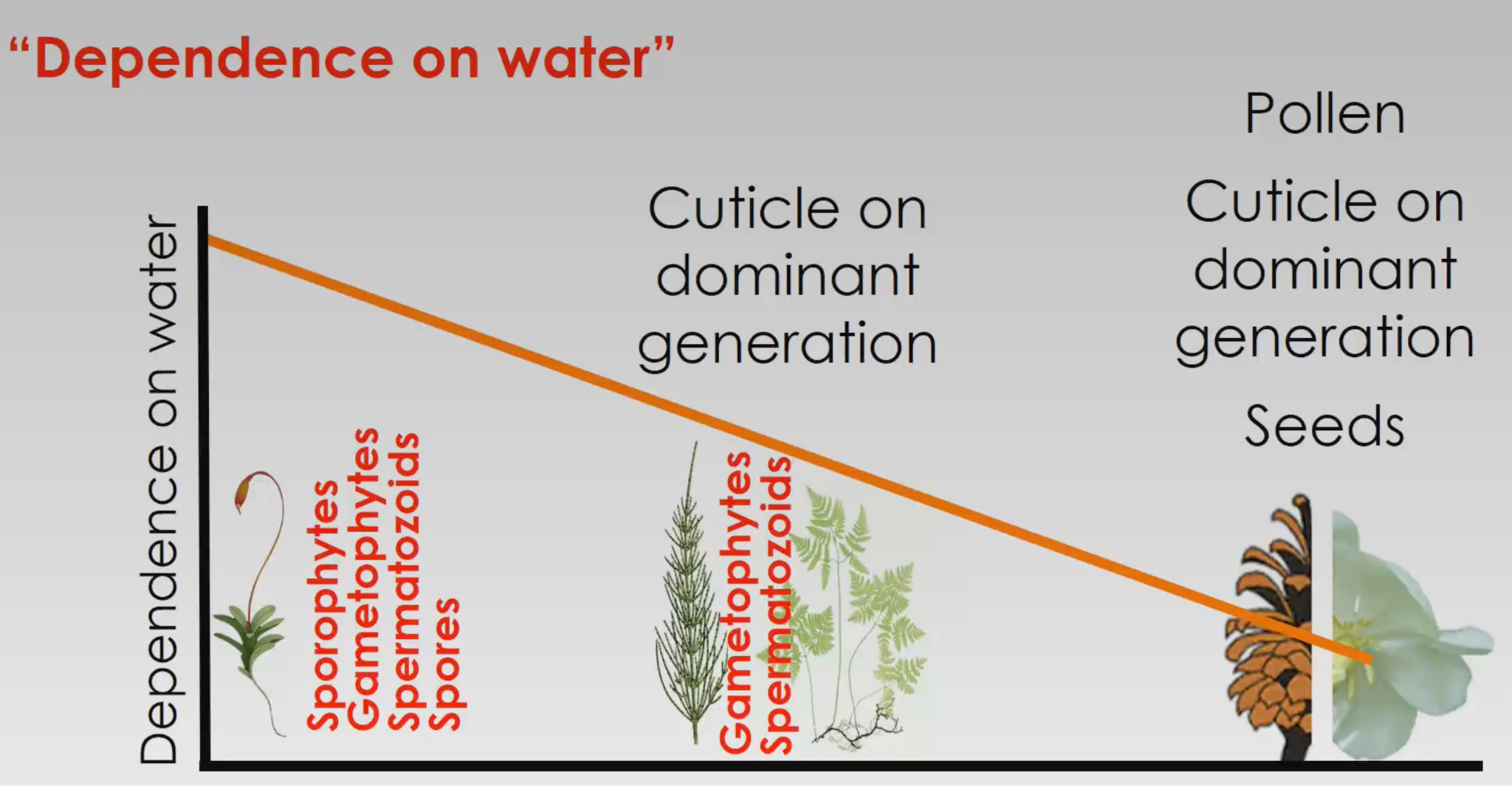Week 1 | Day 2 | BIOA02
Week 1 | Day 2 | BIOA02
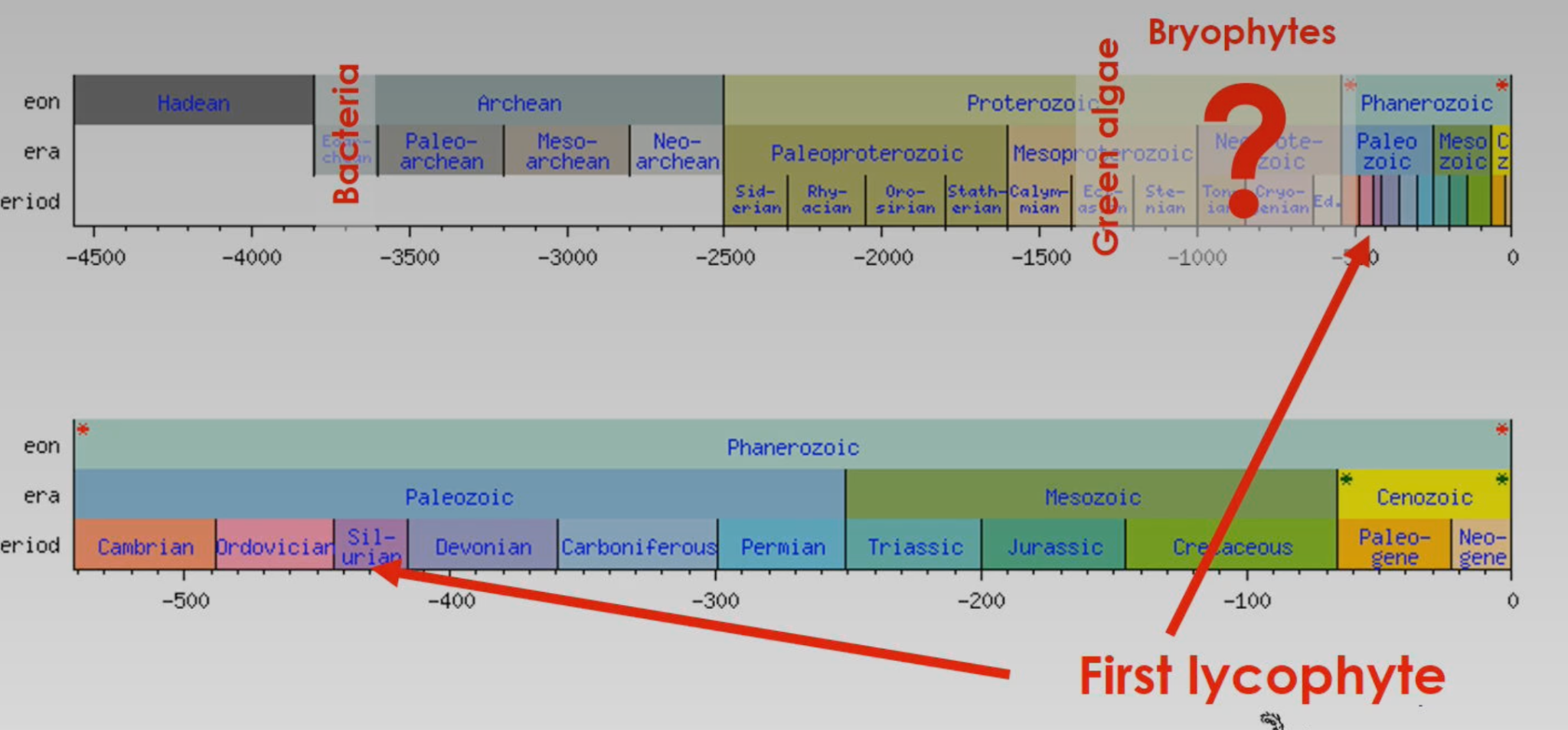
- Adapted better than bryophyte outside of water because of these characteristics:
- Cuticles
- Waxy layer that helped retain water
- Stomata
- Because they’re outside of water, they need ‘breathing ports’ to take in CO2 and take out water
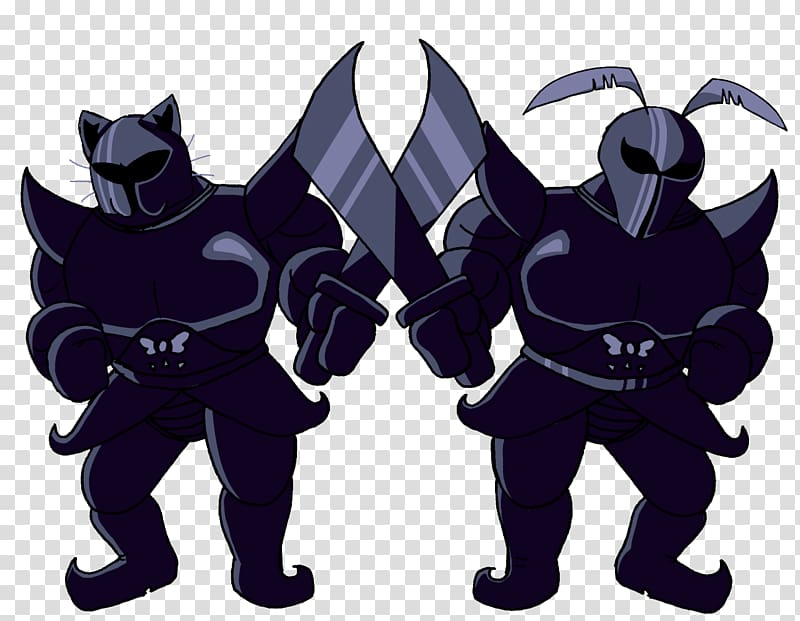
- Stoma made up of 2 guard cells <- like this
- Because they’re outside of water, they need ‘breathing ports’ to take in CO2 and take out water
- Vascular tissue
- Cuticles
Diversity of Lycophytes
3 groups:
- Clubmosses (400 species)
- Quillworts (150 species)
- Spikemosses (700 species)

Ferns (3 groups)
- Whisk ferns (2 species)
- Horsetails (15 species)
- True ferns (2000 species)
- 75% of species found in tropics
Life Cycle of Ferns (Same as Lycophytes)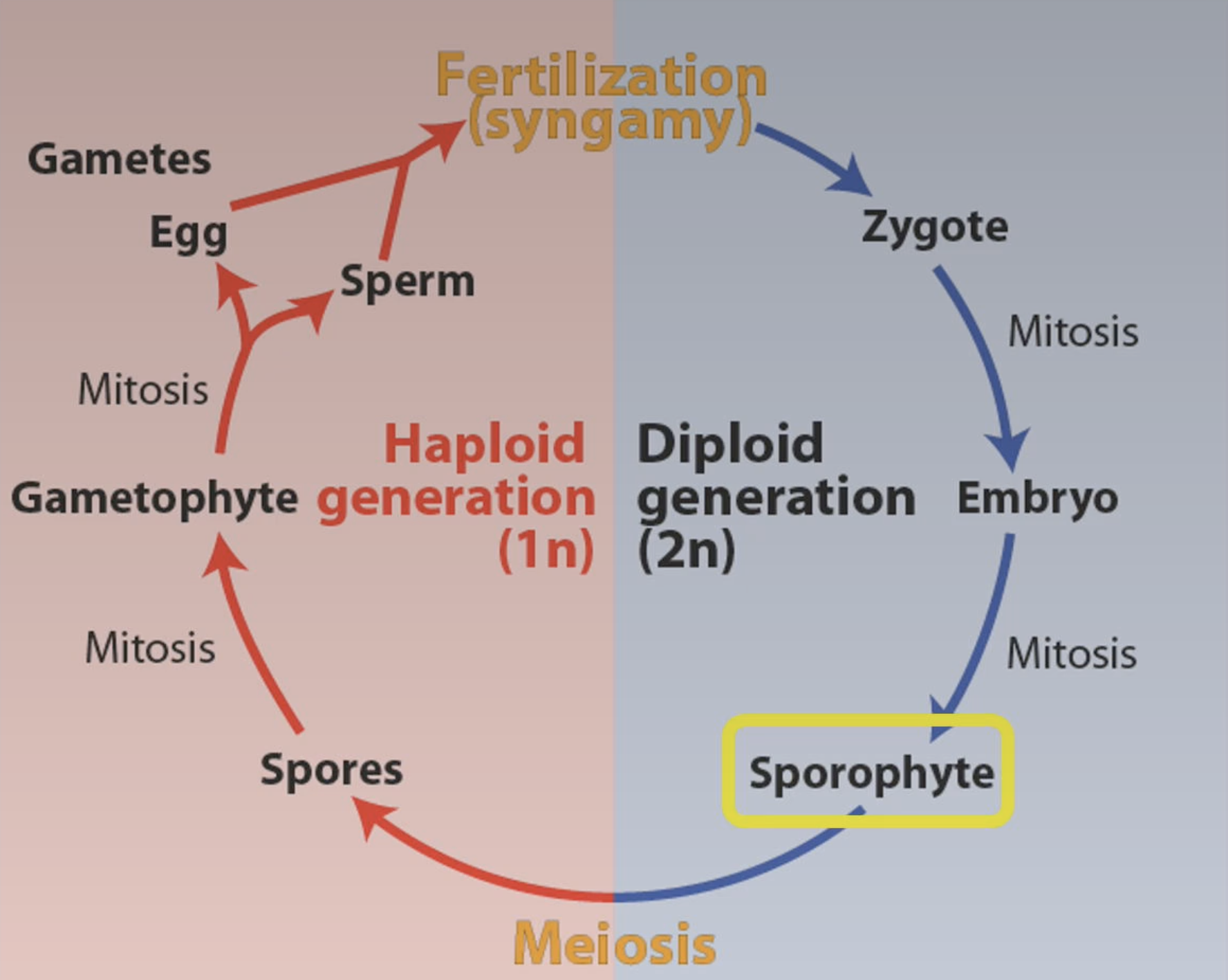
- Diploid (sporophyte) is dominant/most seen in this state
- Bryophytes is the opposite (gametophyte is dominant)
 Sorus can be found on underside of leaves
Sorus can be found on underside of leaves
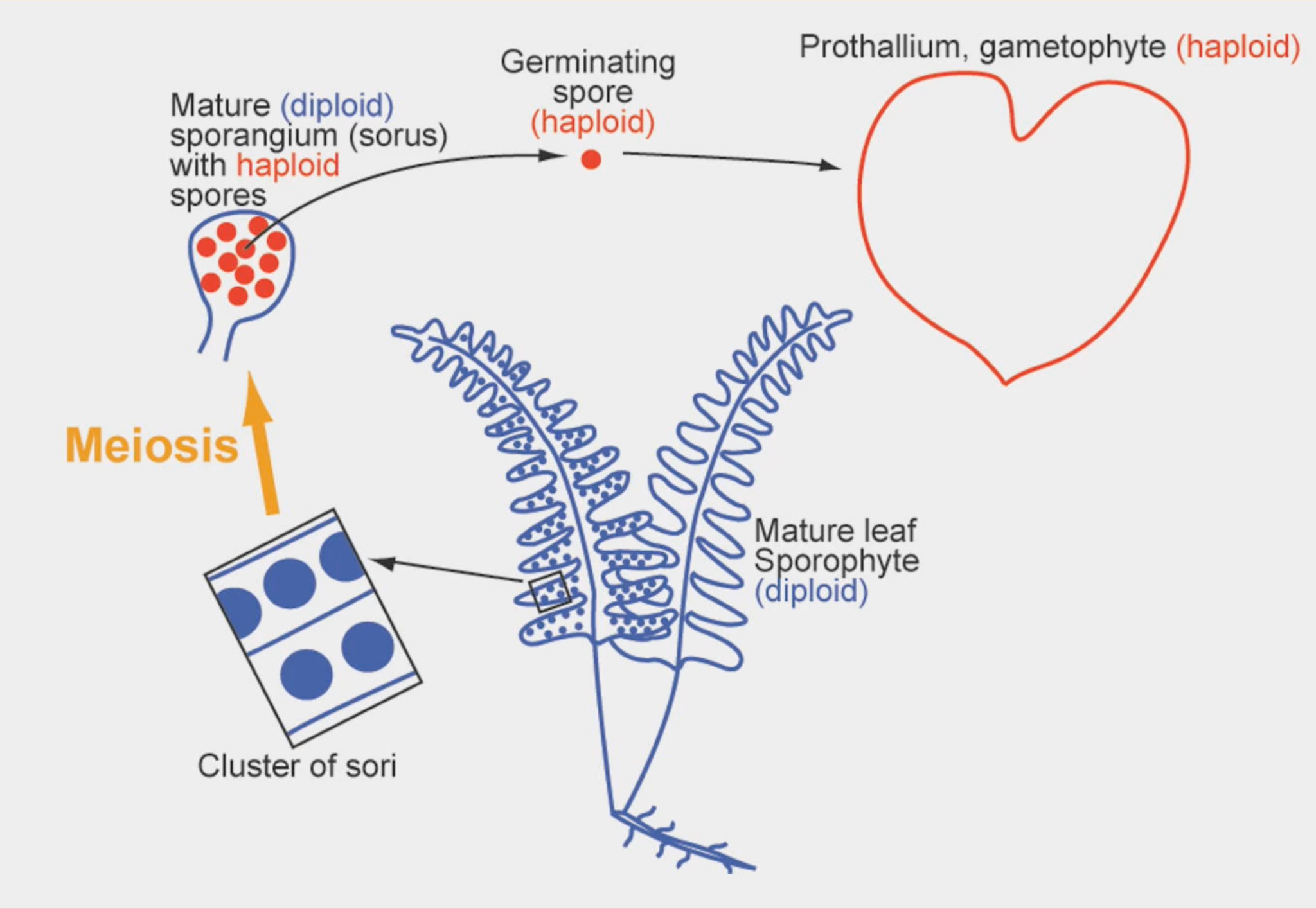
- Prothallium used for sexual reproduction
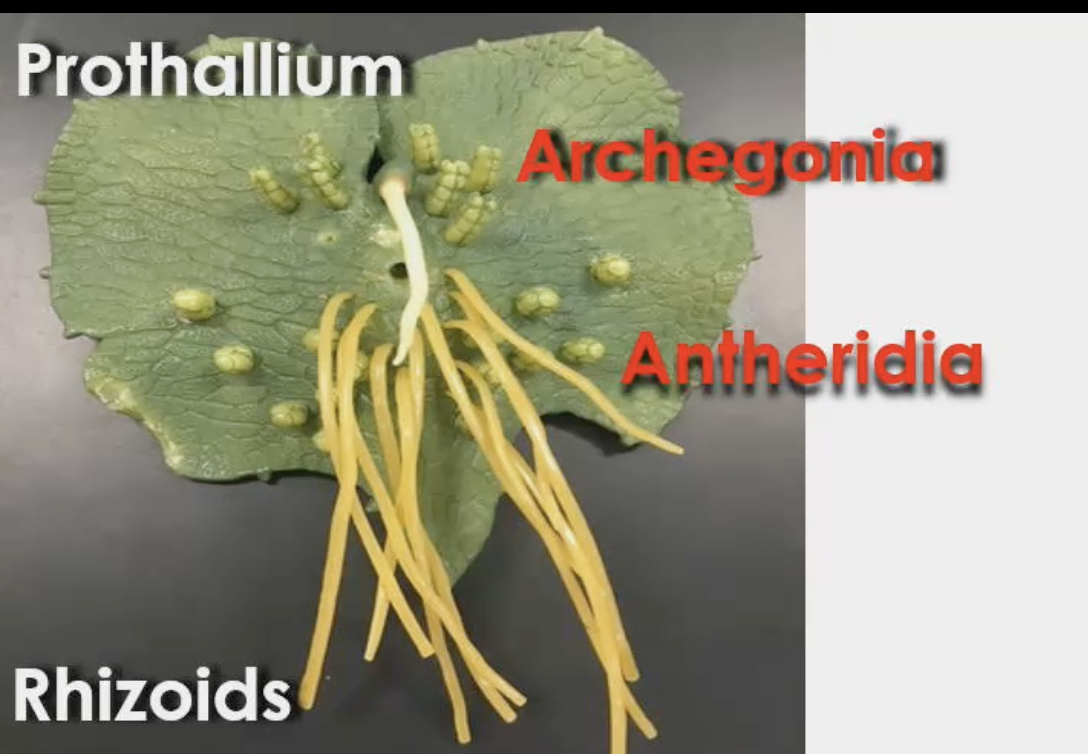
- Grows 2 structures: female is archegonia, male is antheridia
- They can self-fertilize by just transferring antheridia spermatozoids to the female counterpart

- The two generations are ‘independent’ (aka sporophyte can do its own photosynthesis after a bit)
- Male gamete (spermatozoid) self-propelled over short-distances
- Spores can disperse over long distances
- Prothallium does not have a cuticle, meaning it still heavily depends on water
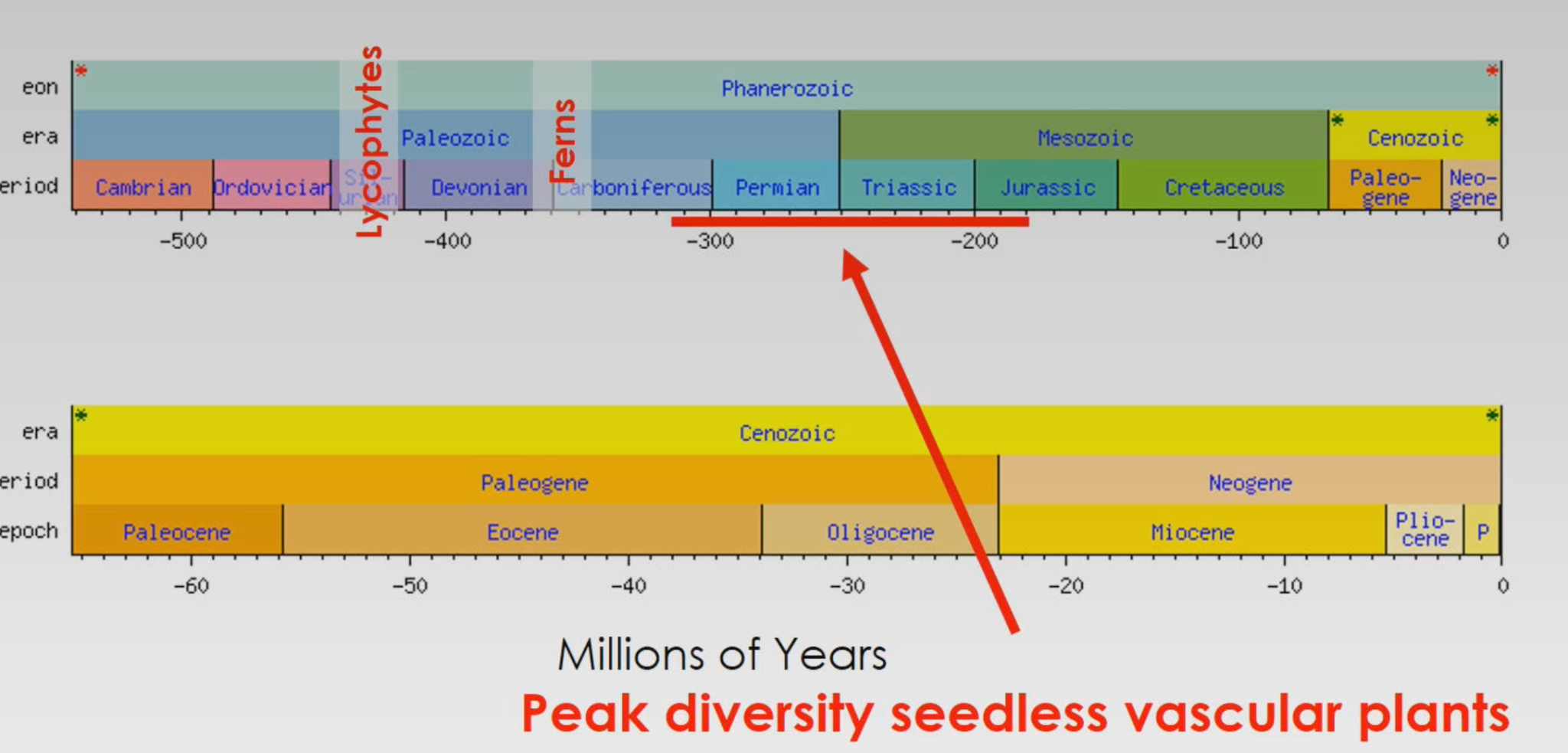
Gymnosperm
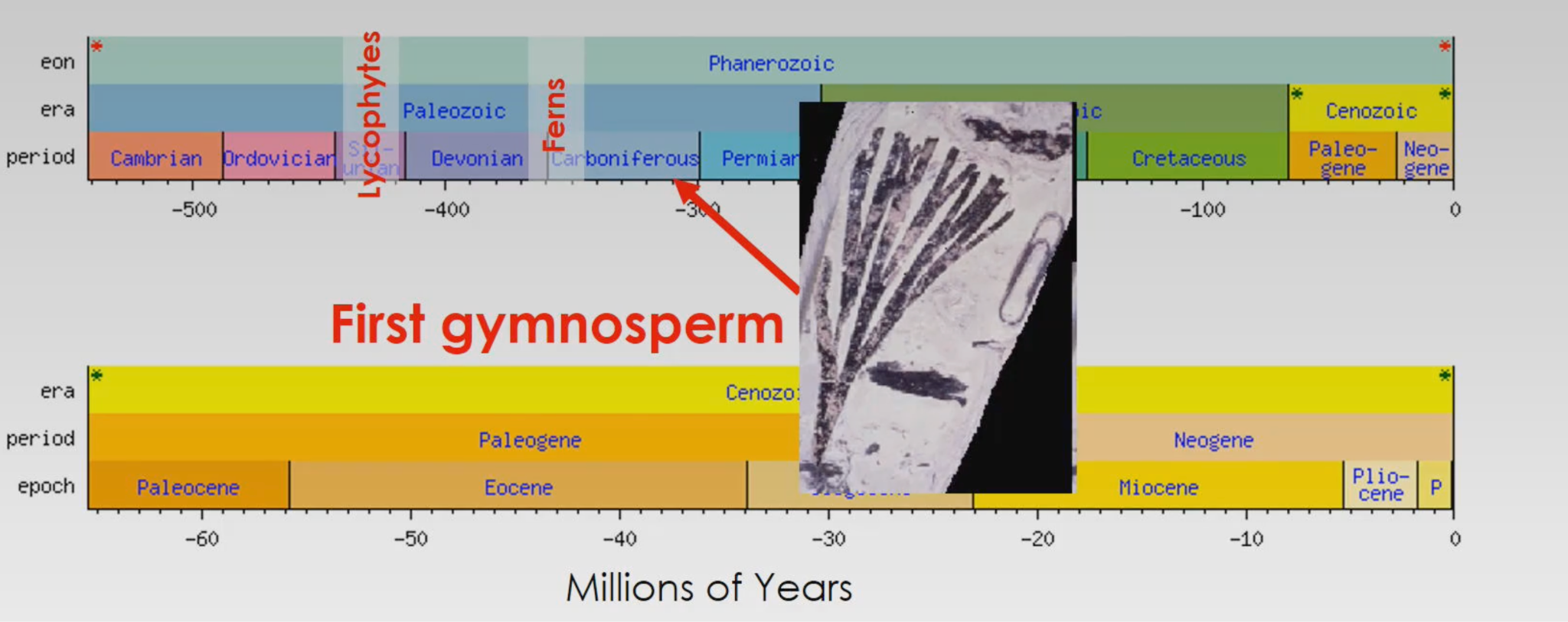
5 groups:
- Conifers (900 species)
- Ginkgo (1 species)
- Ephera (35 species)
- Welwitschia (1 species)
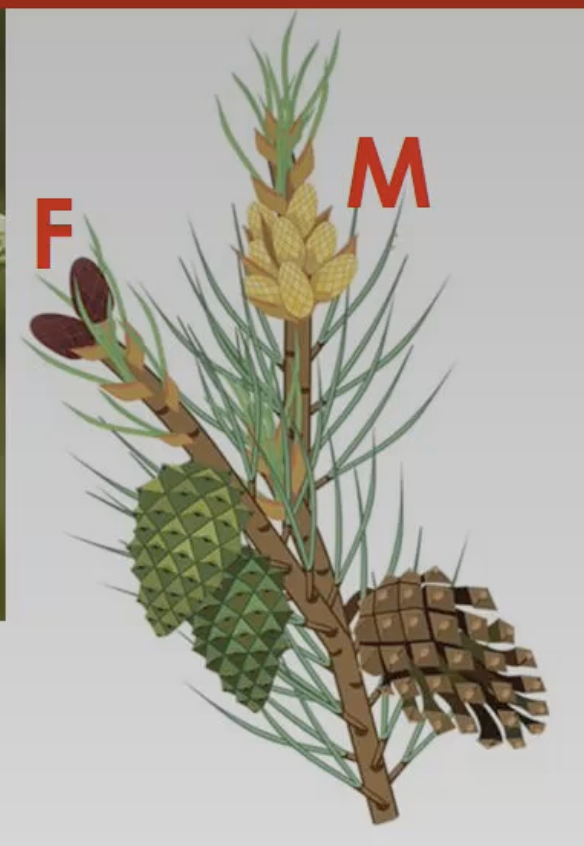
- Gnetum (35 species)
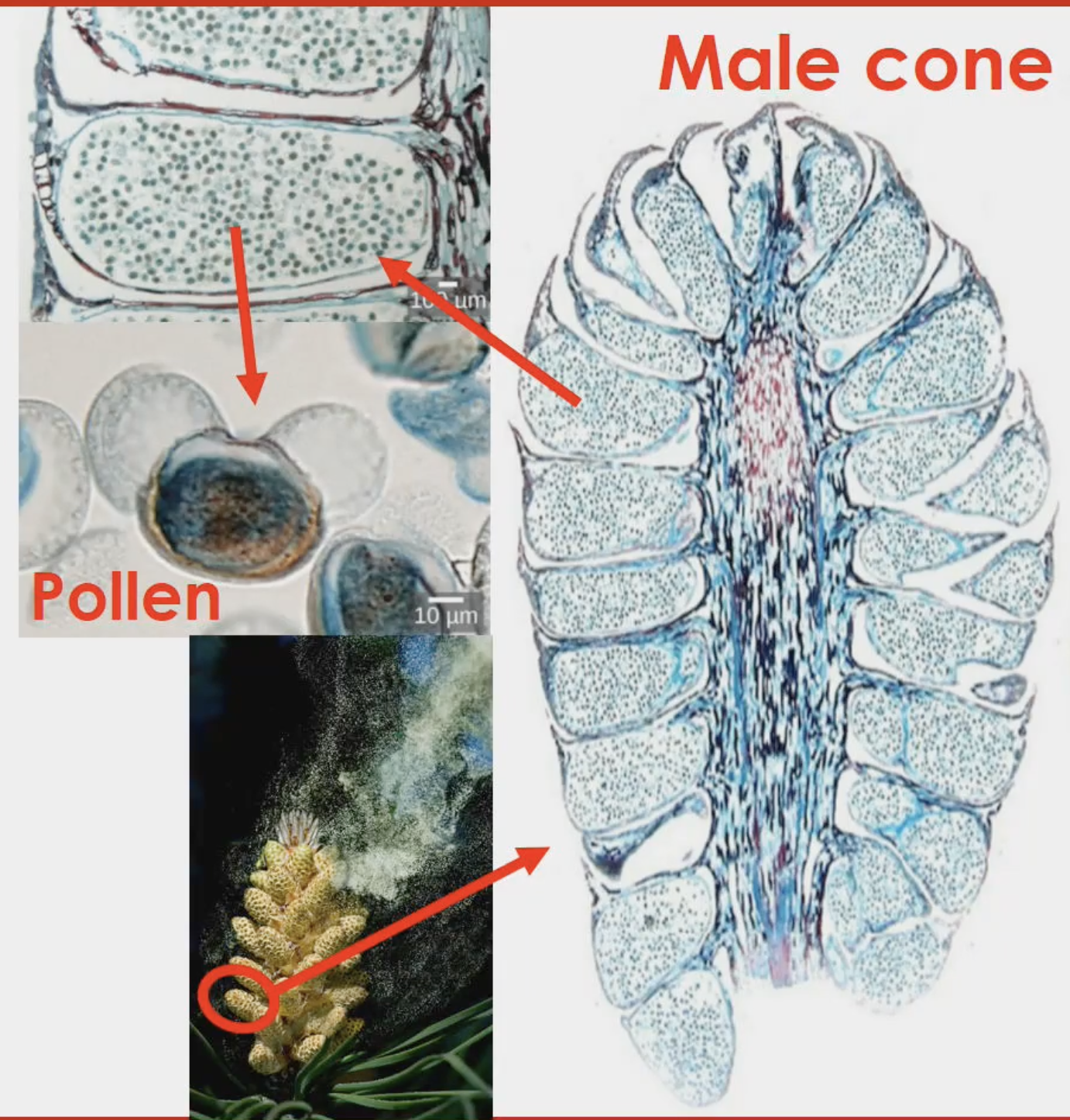
- Conifers (in latin: ‘cone-bearing’)
- Male and females short lived after they give their pollen/seeds BUT…
- It takes a female cone 2 years to disperse its seeds
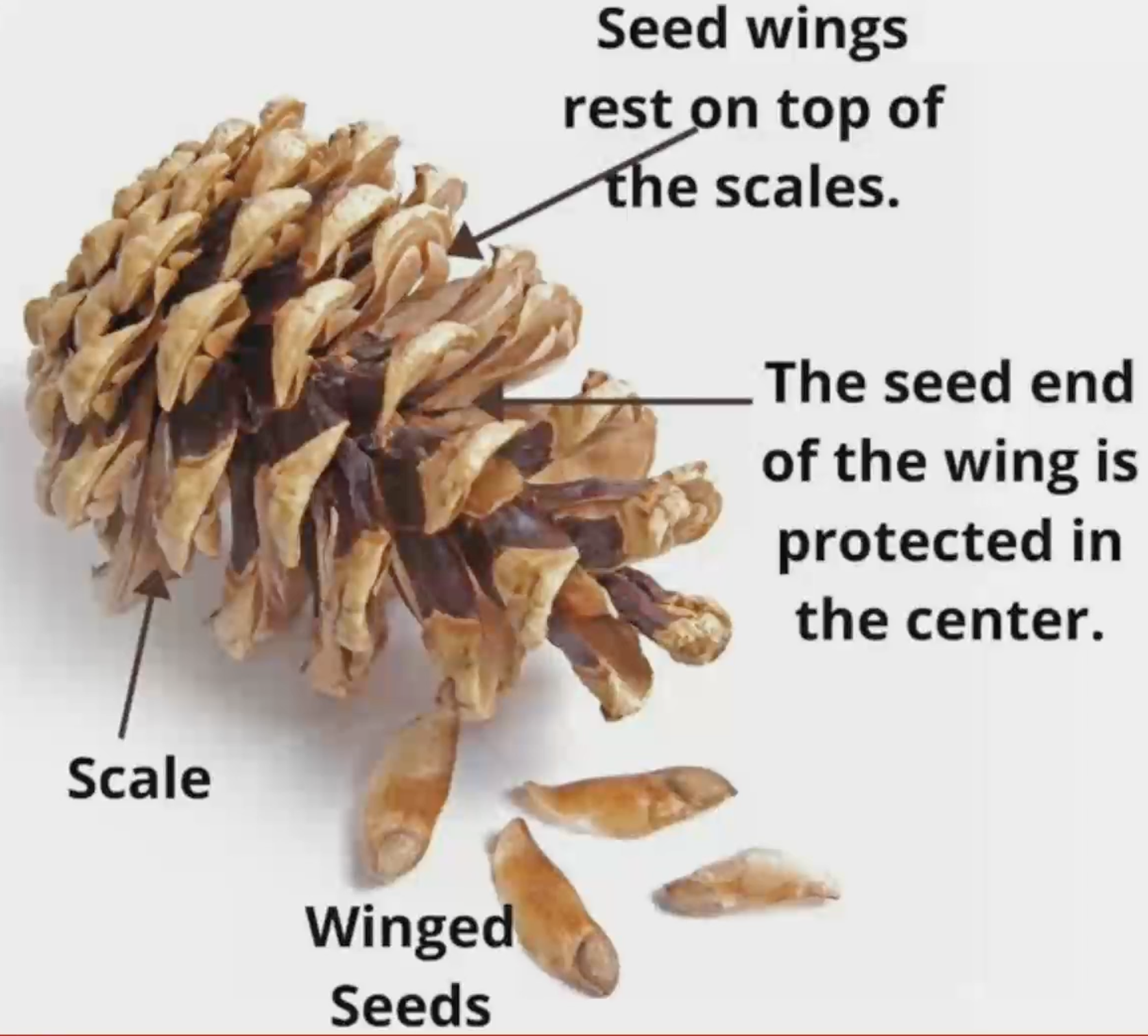
- It takes a female cone 2 years to disperse its seeds
Key Invention: Wood
- Wood did not exist before gymnosperms
- Allowed gymnosperms to grow gigantic and be protected
Angiosperm (in Latin: Covered Seeds)
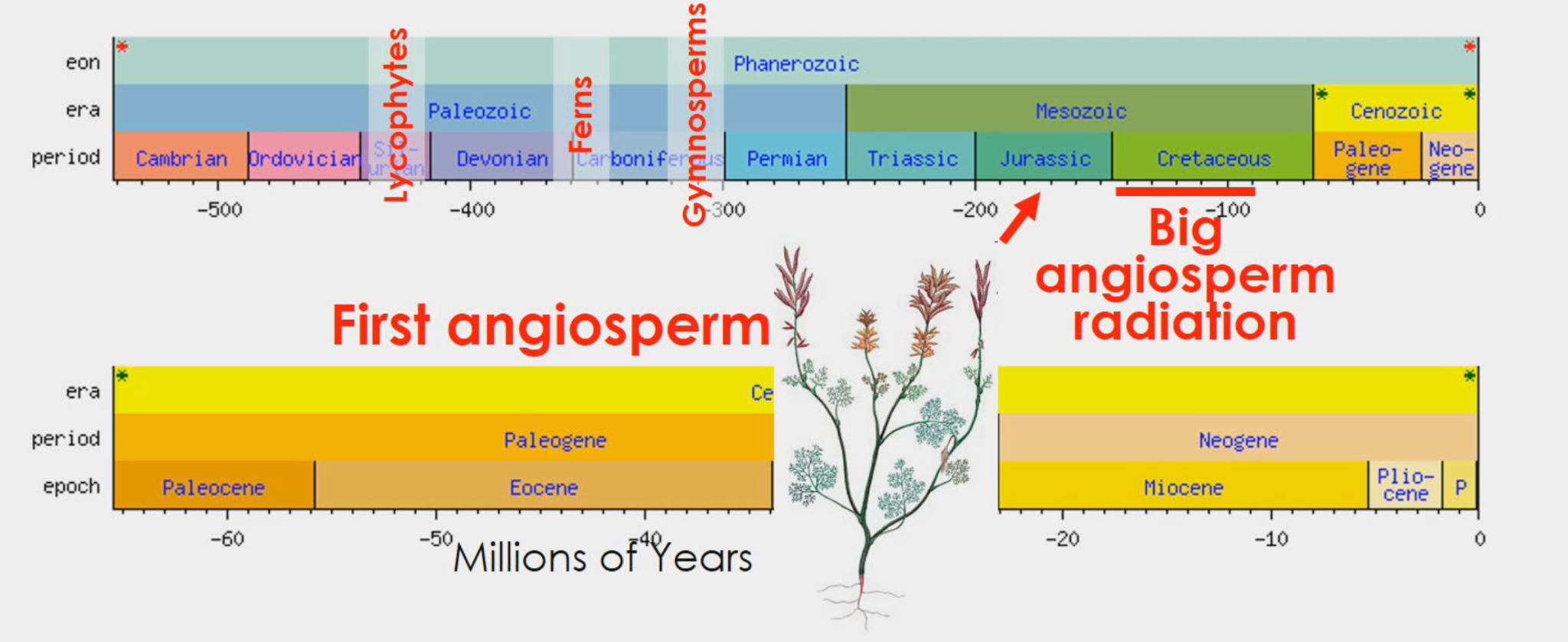
- Do not produce through cones, instead uses flowers
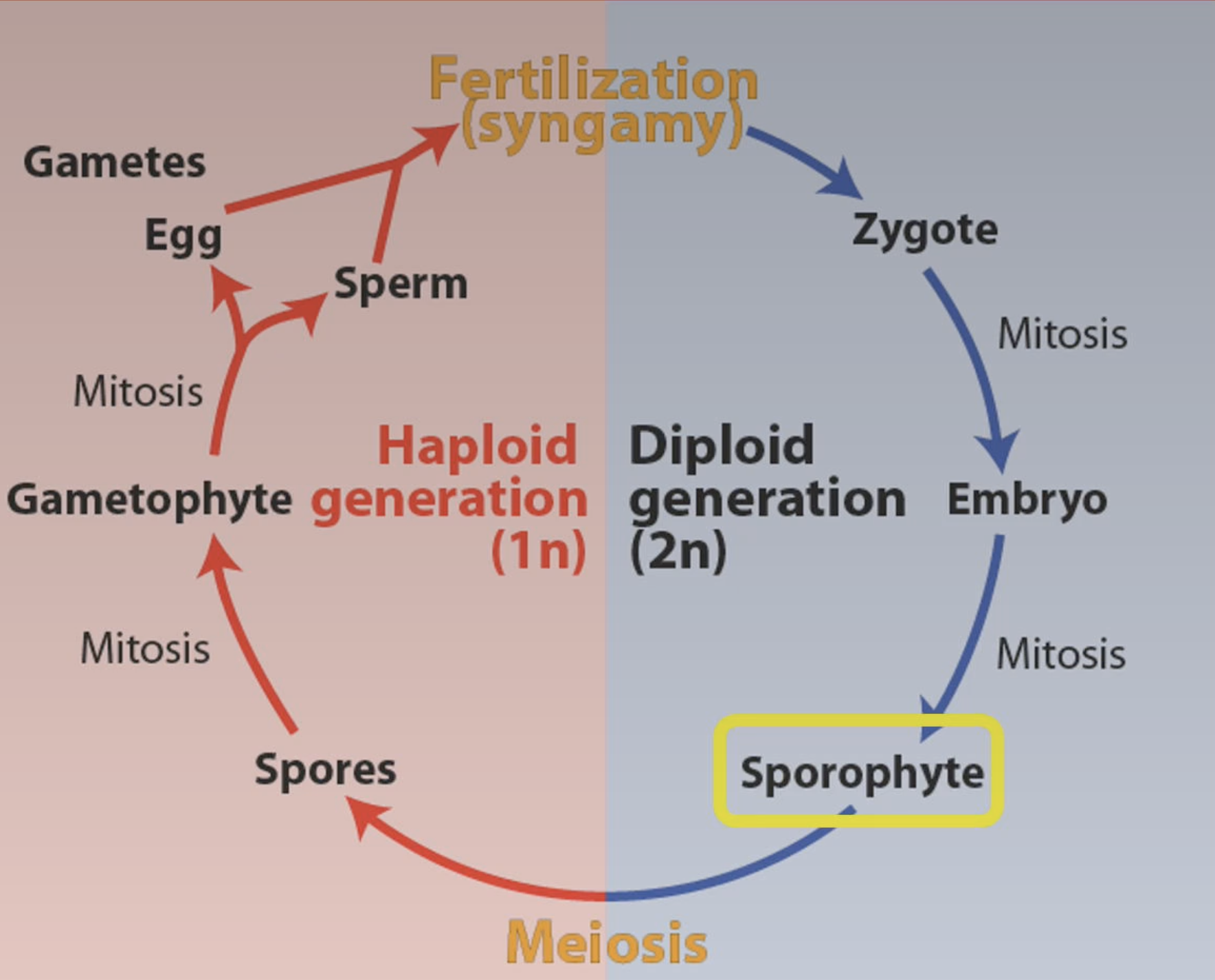
- Sporophyte is dominant over gametophyte
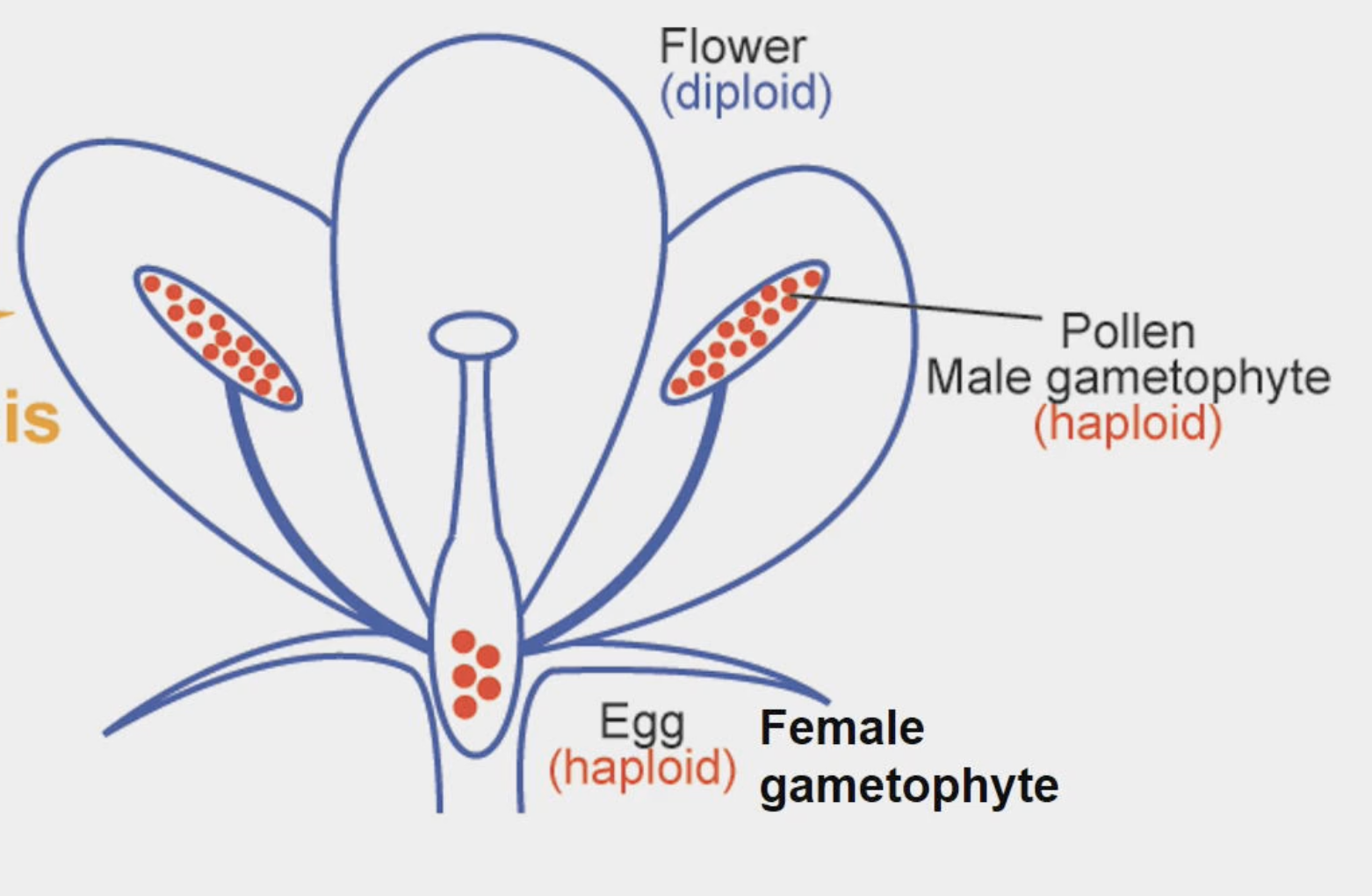
Sporophyte Feeds the Gametophyte
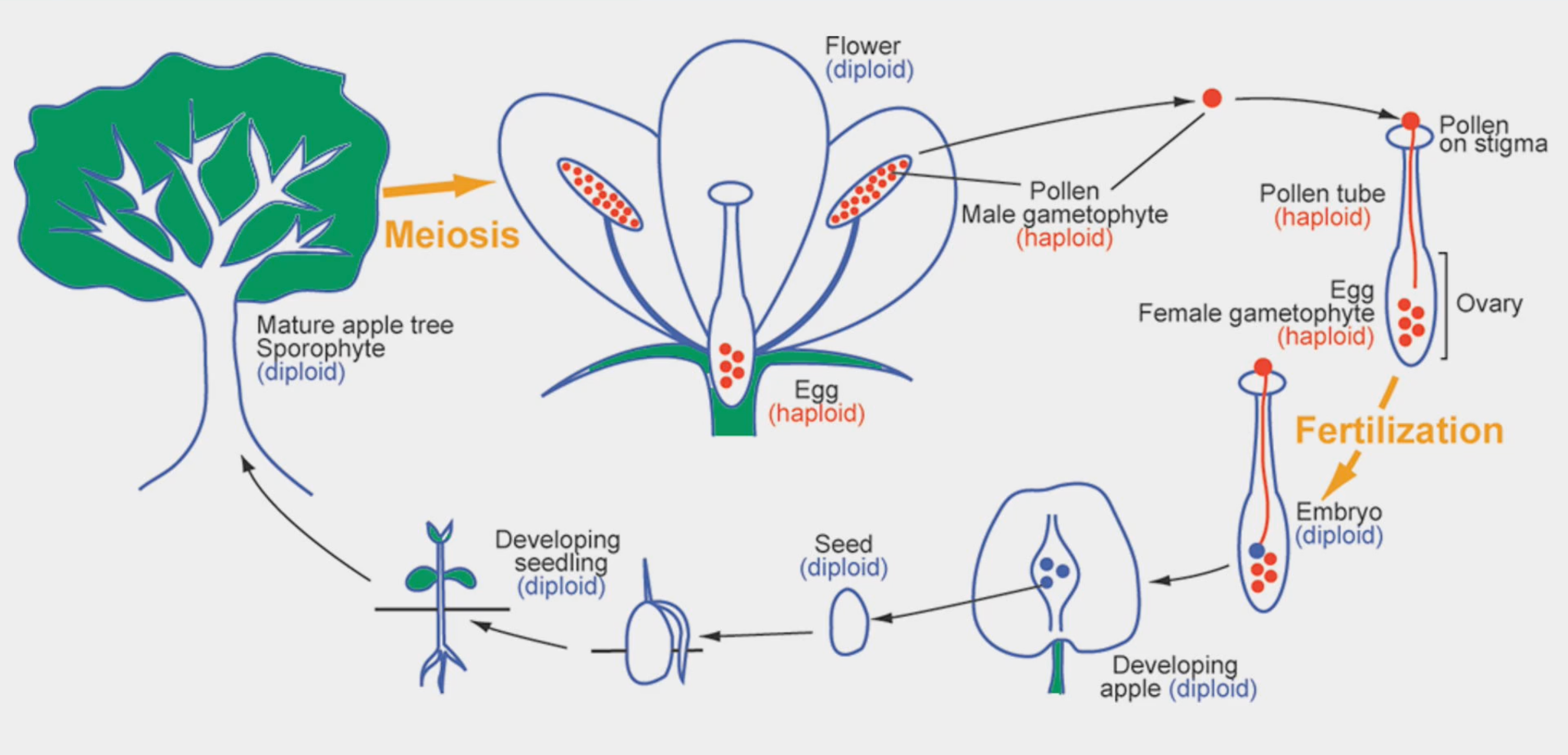
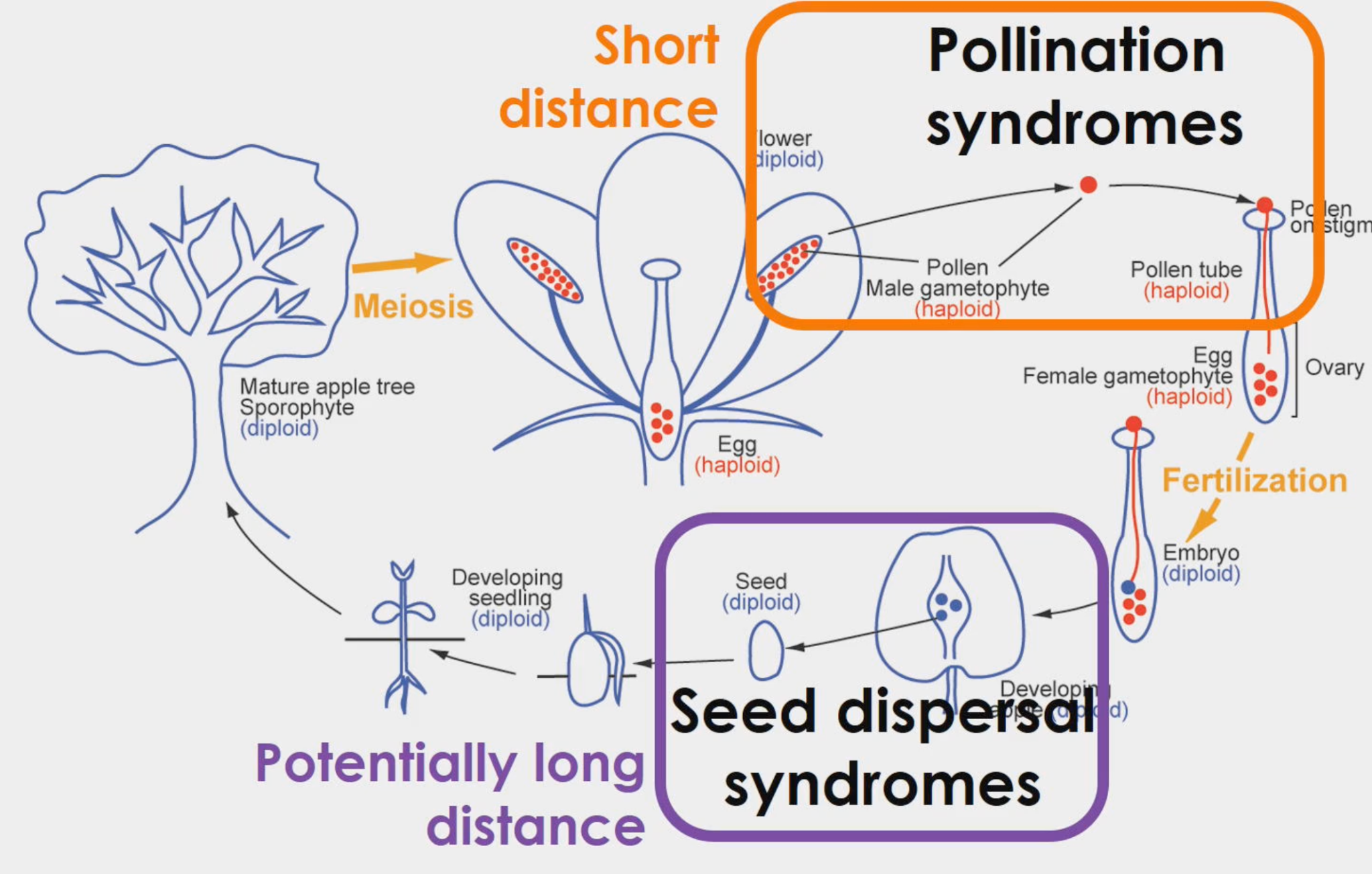
Interpretation of Life Cycle (gymno and angiosperm)
- Gametophyte totally dependent on sporophyte
- Male gametophyte (pollen) moved over short/long-ish distances = pollination syndrome
- Seeds dispersed over long distances = seed syndrome
Tree of Life - Key Evolutionary Inventions

Photosynthetic Summary
- Bryophytes: gametophyte feeds sporophyte
- Lycophytes/ferns: both generations are photosynthetic
- Gymnno/angiosperms: sporophyte feeds gametophyte
Mobility of Life Cycle Phases Summary
Spermatozoids | self-propelled, short-ish distance |
|---|---|
Spores | wind dispersed, potentially long distance |
Pollen (gymnosperm) | wind, potentially long distance |
Seeds (gymnosperm) | wind/animals, potentially long distance |
Pollen (angiosperm) | wind/animals, potentially long distance |
Seeds (angiosperm) | water, wind, animals, potentially long distance |
Dependence on Water